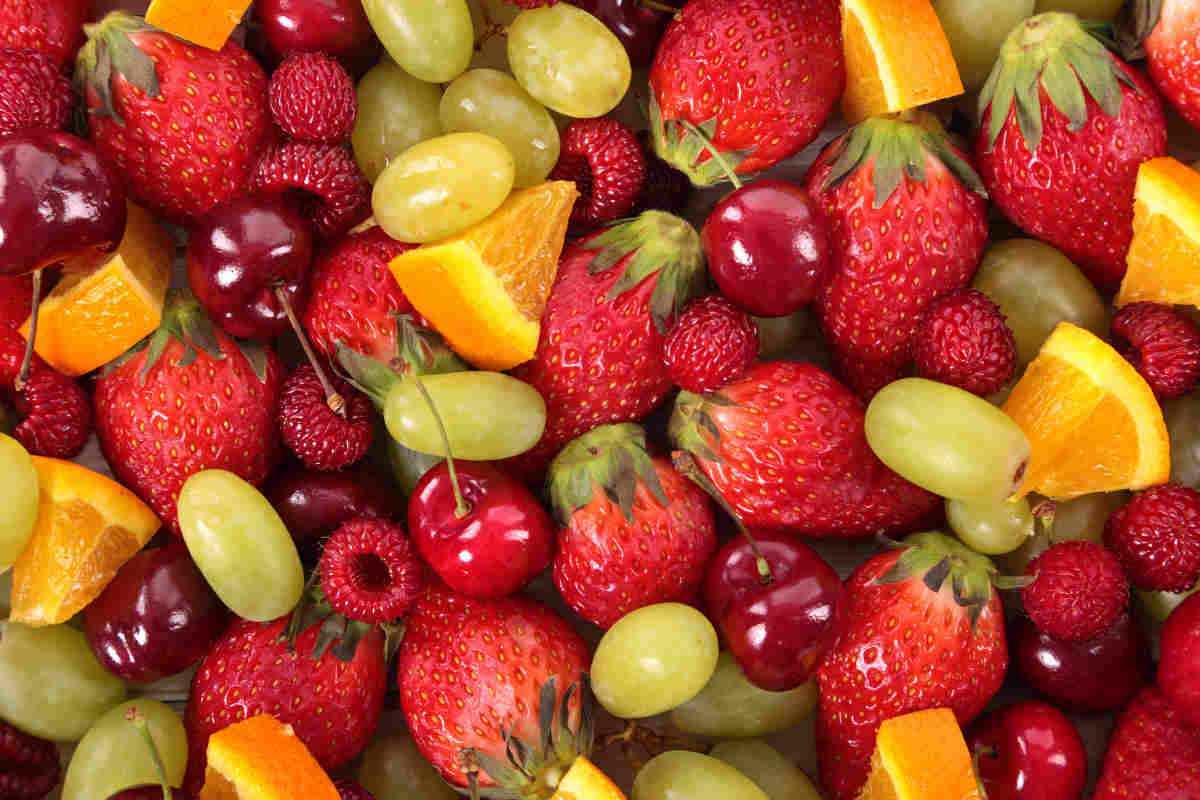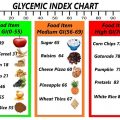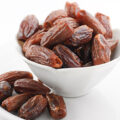Fruits are important sources of dietary fibre, vitamins (especially vitamin C), and antioxidants. Although fresh fruits are subject to spoilage, their shelf life can be extended by refrigeration or by the removal of oxygen from their storage or packaging containers. Fruits can be processed into juices, jams, and jellies and preserved by dehydration, canning, fermentation, and pickling.
Eating two servings of fruit and three servings of vegetables every day is the right mix for longevity, according to a large new study from researchers from Harvard T. H. Chan School of Public Health. The study looked at 30 years’ worth of nutrition data from more than 100,000 women and men participating in the Nurses’ Health Study and the Health Professionals Follow-Up Study, as well as data from 26 other studies that included another 2 million adults worldwide.
Eating more than five servings per day of fruits and vegetables was not linked with additional health benefits, the researchers found. They also found that certain fruits and vegetables provided the biggest benefits, including green leafy vegetables such as spinach and kale, cruciferous vegetables such as broccoli and brussels sprouts, foods rich in beta carotene, and citrus fruits and berries. Least healthful were starchy vegetables such as peas, corn, and potatoes.
What Are The Best Low Glycemic Fruits?
Fruit contains two types of sugar: fructose and glucose. The proportions of each vary, but most fruits are about half glucose and half fructose. Glucose raises blood sugar, so the body must use insulin to metabolize it. Fructose does not raise blood sugar. Instead, the liver breaks it down.
The low glycemic (low GI) fruits is based on the concept of the glycemic index (GI). Studies have shown that the low GI foods may result in weight loss, reduce blood sugar levels, and lower the risk of heart disease and type 2 diabetes.
The glycemic index (GI) is a scale from 1–100. Each food fruit get a score, and the lower the score, the longer that fruit takes to raise a person’s blood sugar levels.
Here is a list of the best low glycemic fruits:
Cherries: Cherries have a GI score of 20 and are also high in potassium, fiber, and antioxidants, which will give your immune system a boost. Cherries pack a punch when it comes to flavor and their abundant nutrient content delivers a positive effect on your heart health.
Grapefruit: Grapefruit has an amazing GI score of 25 and contains over 100 percent of your recommended daily intake of vitamin C. This citrus fruit also has a large number of nutrients such as antioxidants, potassium, and fiber. They’re also good for maintaining healthy heart function and support an effective digestion process. Grapefruits are a good booster for your immunity as well.
Dried apricots: Dried apricots have a GI index of 32. They are high in vitamin A and E. They also have one-fourth of the daily copper requirement. Dried apricots, and most other dried fruits, for that matter, contain more sugar and have a higher GI than the whole fruit counterpart. So, if you opt for the dried fruit option, then keep your portions small.
Pears: Pears have a GI score of 38 and they are high in fiber as well. One small pear has about 7 grams of fiber. This is roughly 20% of the daily fiber your body needs. It has a rich, sweet, and subtle taste, whether having it fresh or baked. But try having them with the peel intact – it’s the healthiest way to eat pears. They also make a great option for summer salads.
Apples: Apples have a glycemic index of 39 and are one of the lowest of the GI fruits. They’re also one of the most common fruits available. This popularity mainly comes because apples are one of America’s favorite fruits. It’s a go-to fruit that satisfies any crunch cravings. It provides roughly 20% of your daily fiber intake and is the healthiest with the peel on. Apples are also believed to reduce the risk for diabetes and cardiovascular diseases. They are gut-friendly and so is a great option to feed your healthy gut bacteria as well. While boosting your iron levels and apples do make a crunchy option for fruit salads.
Oranges: Oranges have a GI score of 40 and offer a great boost of vitamin C. There are plenty of orange varieties, so their glycemic index can vary. In general, the average glycemic index of a medium-size orange is 43. So, it’s safe to say that oranges, in general, have a low glycemic index – well below 55. Orange is also a great source of fiber and makes a good pulpy fruit you can munch on.
Plums or Prunes (Dried plums): Plums have a GI score of 40 and are juicy treats rich in antioxidants. Like apricots, plums also bruise quickly, and you may find it hard to get your hands on fresh plums all year round. But you can enjoy plums in their dried state which are the “prunes.” Prunes have a GI score of 29. Specifically, prunes are ideal for those who suffer from constipation as they’re a potent natural laxative. The fiber content in prunes adds bulk to the stool alongside reducing the cholesterol content.
Strawberries (including other berries): Strawberries have a GI score of 41 and are a great snack or dessert fruit that’s popular around the world. A cup of strawberries has more vitamin C than an orange. They’re also a good source of fiber and contain micronutrients, such as polyphenols that act as antioxidants. Strawberries protect your heart in different ways. They can increase HDL (good) cholesterol, lower blood pressure, and help prevent cancer. They’re also a sodium-free, fat-free, cholesterol-free, low-calorie fruit option.
Here is a list of berry varieties that are also fruits with a low glycemic index, ranked low into the 30s and 40s.
- Goji berries
- Bilberries
- Saskatoon berries
- Acai berries
- Elderberries
- Cloudberries
- Huckleberry
- Gooseberries
- Chokeberries
- Mulberries
- Salmonberry
- Muscadine
- Buffaloberries.
Avocado: The actual GI score of avocado largely depends on its ripeness. Studies have shown that the GI of avocado in general scores below 55, making it officially a low GI fruit. One study found that Nigerian avocado had a GI of 40+. Shockingly, in another study, it was found that the GI of a raw, peeled avocado is estimated to be about zero. This zero score came with a margin of error of just one point. The conclusion for such a score was backed up by the fact that avocados contain very few sugars. The main sugar found in avocado is D-mannoheptulose. This sugar is believed to help control blood sugar management. This is a key science behind why the American Diabetes Association encourages diabetes patients to add avocados into their diet.
Peaches: Peaches have a GI of 42 and only have 68 calories. It’s packed with 10 different vitamins, including 6% of daily vitamin A and 15% of daily vitamin C. One medium peach also contains 2% or more daily value of vitamins E and K. They also have a good amount of minerals, niacin, folate, iron, choline, potassium, magnesium, phosphorus, manganese, zinc, and copper. Peaches offer a great delicious alternative to a calorie-laden dessert.
Grapes: On the lower end of the popularity list of fruits with a low glycemic index, grapes make it, with a GI score of 53. They provide fiber, vitamin B-6, and other essential minerals in ample amounts. As a fruit where it’s normal to eat the skin, the skin is also rich in healthy fiber. Grapes also provide effective support for digestion and efficient brain function. They can also boost your mood by supporting positive mood hormones.






